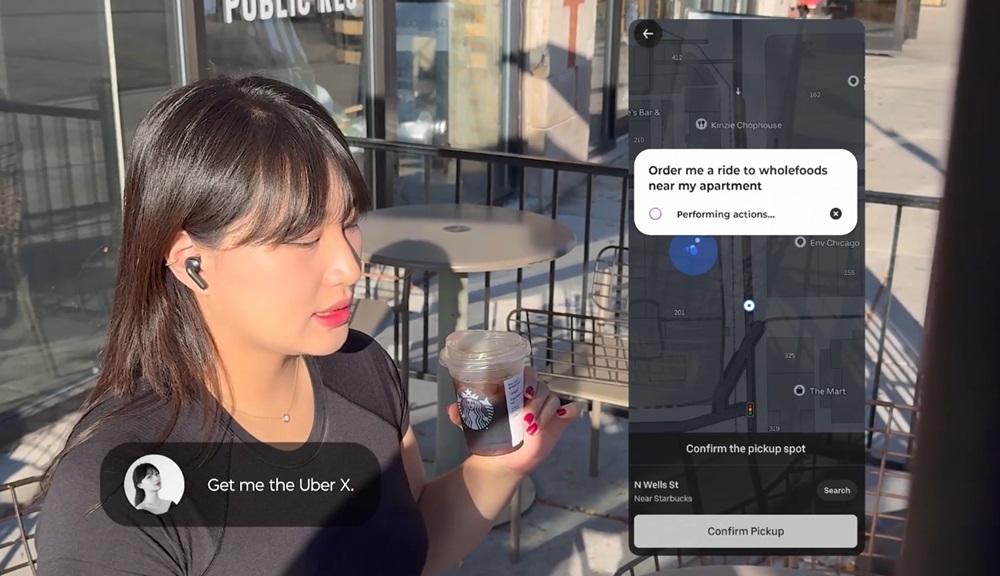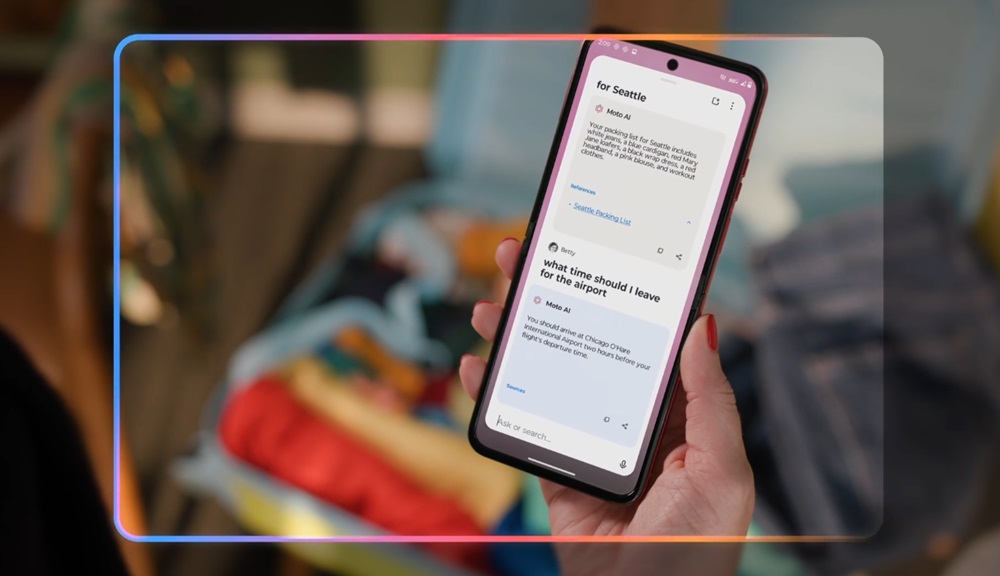Picture this: you’re craving your usual iced Americano, and instead of launching an app, swiping through options, or typing in commands, you just casually say, “Hey, get me my coffee,” and voilà! The order’s placed, your phone alerts you when it’s ready, and you never had to lift a finger. This isn’t some far-off science fiction fantasy—it’s Motorola’s latest AI-powered dream showcased at Lenovo’s Tech World ’24. But can this AI wizardry really stand up to the giants of the smartphone world like Apple, Google, and Samsung?
While Apple and Google are busy teaching their digital assistants to talk back, Motorola is raising the bar with its new Large Action Model (LAM). Unlike Google’s Gemini or Apple’s Siri, Motorola’s LAM isn’t about chit-chatting or spitting out information; it’s about getting things done. You want a coffee? LAM orders it. You need a ride? LAM books it. The goal here is not just answering your queries but executing real-world tasks based on what you say.
Sure, it’s still in the concept stage, but Motorola’s vision promises a future where your phone doesn’t just respond — it acts.
How does it compare to Google, Apple, and Samsung?
Let’s break it down. Google’s AI game is strong with its Gemini assistant, which integrates with apps, learns on the go, and serves up answers about your screen content. Apple’s also on the scene, with its “Apple Intelligence” rolling out soon to eligible iPhones, where Siri will evolve beyond answering questions to more intuitive responses. But here’s where Motorola is throwing its punch: its AI isn’t content with just serving up info — it wants to complete the whole task for you.

Samsung, another tech heavyweight, is also in the mix, flexing its AI muscles through a partnership with Google. Samsung’s AI ambitions are mostly seen in Galaxy devices, improving user experiences from photos to health tracking. Yet, despite all these advancements, none of the big players have truly nailed AI that gets things done seamlessly, without manual inputs. Motorola’s LAM could be the ace up its sleeve.
But Motorola has a challenge ahead: even with this sleek new vision, it’s still the underdog in a smartphone market dominated by the big guns. Apple and Samsung make up 36% of the global smartphone market, and their AI efforts are powered by major partnerships and massive ecosystems. So, where does Motorola fit in?
Is action-oriented AI hype or hope?
Motorola’s bet is that people will prefer an AI that doesn’t just talk back but actually acts for them. Imagine booking flights or making reservations with just a simple command. No need for endless swipes or taps — just pure action.
Motorola isn’t the first to try this. Remember Rabbit’s R1 handheld gadget that promised something similar but flopped miserably? Or Brain.AI, another startup that dabbled in action-based AI? These efforts failed to meet user expectations, making Motorola’s new push both exciting and risky. If Motorola can nail this, though, it might convince even the skeptics. After all, a recent CNET survey found that a quarter of respondents weren’t exactly sold on AI features and didn’t see the point. If your AI can literally do your errands, that opinion could flip real fast.
Motorola isn’t new to the AI game, though. Earlier this year, Motorola introduced generative AI tools like “Magic Canvas” (creates images from your imagination) and “Style Sync” (syncs phone to your personal style). But those were baby steps. Now, with its LAM vision, Motorola is diving into deeper waters, aiming to integrate AI with daily life tasks — whether it’s setting alarms, picking playlists, or ordering your Uber without you having to sweat the details.

It’s not just talk. Motorola is backing up its words with updates to its Smart Connect platform, which will use AI to unify your Motorola and Lenovo devices, making everything from your phone to your smart home devices play nice together. You could control everything with natural language commands.
All this sounds fantastic — on paper. But Motorola still has a long way to go before these features hit your hands. The beta phase for Moto AI is rolling out, and we’ll have to see how the new LAM technology performs in real life. Still, the concept is a refreshing departure from the endless AI tools for photo editing, language translation, or “helpful” suggestions you never use.
Motorola’s AI might be what finally brings meaningful change to how we use our smartphones. But for now, all we can do is sit tight and see if the LAM model can deliver on its promise or if it’ll join the graveyard of ambitious AI projects that never quite made it.
Featured image: Motorola
TechIssuesToday primarily focuses on publishing 'breaking' or 'exclusive' tech news. This means, we are usually the first news website on the whole Internet to highlight the topics we cover daily. So far, our stories have been picked up by many mainstream technology publications like The Verge, Macrumors, Forbes, etc. To know more, head here.


